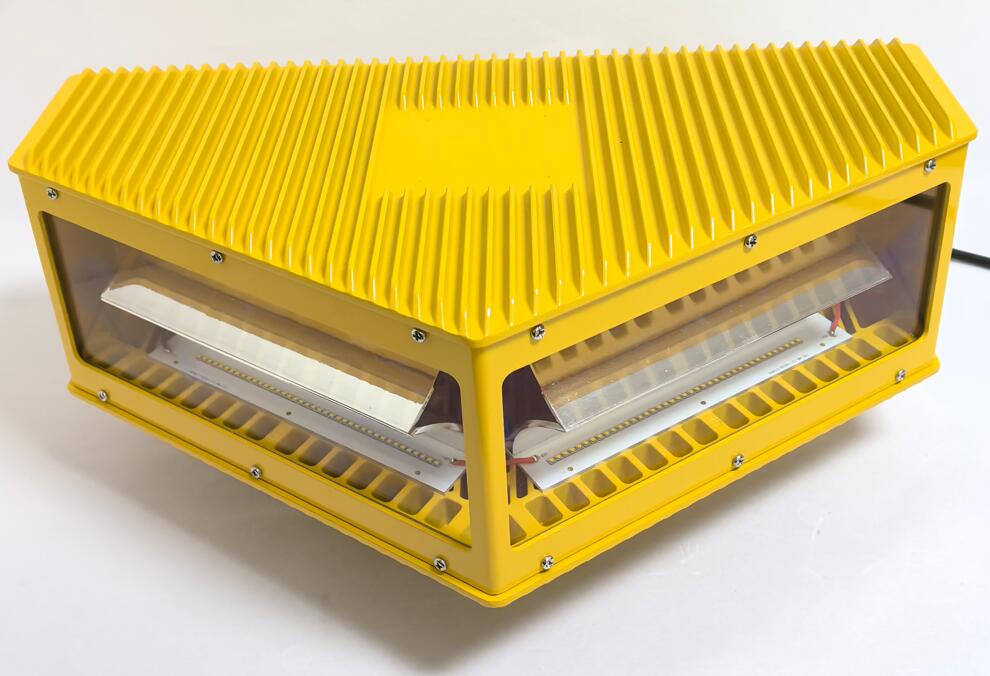Airport Obstruction Lights: Safeguarding Skies Through Visible Warnings
The Critical Role of Airport Obstruction Lights
Airport obstruction lights serve as the silent guardians of aviation safety, marking potential hazards that could endanger aircraft during critical phases of flight. These specialized lighting systems create a visual language that pilots instinctively understand, transforming static structures into clearly defined obstacles. From communication towers to wind turbines, airport obstruction lights ensure these man-made objects don't disappear into the night sky or blend with urban light pollution.
The implementation of airport obstruction lights isn't merely recommended practice—it's a regulatory requirement enforced by aviation authorities worldwide. These lights form part of a comprehensive obstacle limitation surface (OLS) strategy, working in conjunction with other safety measures to prevent collisions and maintain safe airspace corridors around airports.
Technical Specifications and Classification Systems
Modern airport obstruction lights follow precise technical standards that dictate their performance characteristics:
Light Intensity Categories:
Low-intensity obstruction lights (L-810): Used for structures below 45 meters (148 feet)
Medium-intensity obstruction lights (Type A/B/C): Covering heights from 45-150 meters (148-492 feet)
High-intensity obstruction lights (Type A/B): For structures exceeding 150 meters (492 feet)

Color Coding Standards:
Red lights: Standard for nighttime marking
White strobes: Typically used during daylight hours
Dual lighting systems: Combine red and white for 24-hour visibility
| airport obstruction lights |
The Federal Aviation Administration (FAA) Advisory Circular 70/7460-1L and International Civil Aviation Organization (ICAO) Annex 14 provide detailed specifications for proper installation and maintenance of airport obstruction lights, ensuring global consistency in aviation safety practices.
Advanced Technologies in Modern Systems
The evolution of airport obstruction light technology has introduced several groundbreaking innovations:
LED Conversion: Modern systems have transitioned from incandescent to LED-based airport obstruction lights, offering:
80% greater energy efficiency
| airport obstruction light |
5-10 times longer lifespan
Improved visibility in adverse weather
Smart Monitoring Systems: Contemporary installations feature:
Remote performance monitoring
Automatic fault detection
Predictive maintenance capabilities
Solar-Powered Solutions: For remote locations, solar-powered airport obstruction lights provide:
Off-grid reliability
Reduced infrastructure requirements
Lower carbon footprint
Aircraft Detection Lighting Systems (ADLS): These intelligent systems:
Activate only when aircraft approach
Reduce light pollution
Minimize community impact
Installation Best Practices and Challenges
Proper installation of airport obstruction lights requires careful consideration of multiple factors:
Structure Mapping: Comprehensive analysis of obstacle dimensions to determine optimal light placement
Zoning Compliance: Adherence to local aviation authority requirements for specific regions
Environmental Considerations: Accounting for terrain, weather patterns, and wildlife impacts
Light Spacing: Ensuring uniform coverage without creating visual confusion
Common installation challenges include:
Balancing visibility requirements with light pollution concerns
Maintaining systems in extreme weather conditions
Ensuring consistent performance across varying altitudes
Addressing power supply limitations in remote locations
Maintenance and Compliance Protocols
Effective airport obstruction light maintenance programs incorporate:
Regular Inspection Cycles:
Daily automated monitoring
Monthly visual checks
Annual comprehensive evaluations
Performance Testing:
Photometric verification
Flash pattern confirmation
Color consistency assessment
Documentation Practices:
Detailed maintenance logs
Compliance certification
Incident reporting systems
Regulatory bodies typically require immediate repair of malfunctioning airport obstruction lights, with many jurisdictions mandating backup systems for critical installations. Proper record-keeping proves essential during safety audits and incident investigations.
Future Trends and Emerging Technologies
The next generation of airport obstruction lights is evolving with several promising developments:
Adaptive Intensity Systems: Automatically adjusting brightness based on:
Ambient light conditions
Weather visibility
Aircraft proximity
Integrated Sensor Networks: Combining lighting with:
Weather monitoring
Structural health sensors
Bird activity detection
Sustainable Solutions:
Enhanced solar efficiency
Energy storage innovations
Recyclable components
Digital Twin Integration:
Virtual system modeling
Performance simulation
Predictive analytics
Drone-Compatible Designs:
Specialized lighting for UAV traffic management
Anti-collision systems for low-altitude operations
Global Standards and Regional Variations
While ICAO establishes international guidelines for airport obstruction lights, regional implementations often reflect local conditions:
North America (FAA Standards):
Emphasis on high-intensity systems for tall structures
Specific requirements for wind farm lighting
Europe (EASA Regulations):
Focus on energy efficiency
Stricter light pollution controls
Asia-Pacific Regions:
Rapid adoption of smart systems
Special provisions for high-density urban areas
Middle East:
Enhanced durability for desert conditions
Special considerations for oil/gas infrastructure
These regional adaptations demonstrate how airport obstruction light technology must balance universal safety principles with local operational requirements and environmental factors.
Conclusion: Lighting the Way Forward
Airport obstruction lights remain an indispensable component of global aviation safety infrastructure. As airspace becomes increasingly crowded with both traditional aircraft and emerging drone technologies, the role of these lighting systems grows more critical. The ongoing technological evolution—from basic warning lights to intelligent, connected systems—ensures airport obstruction lights will continue to protect lives and property while adapting to new aviation challenges.
Looking ahead, the integration of advanced monitoring, predictive analytics, and sustainable designs promises to make airport obstruction lights even more effective and environmentally responsible. Their continued development represents not just an obligation for safety compliance, but a commitment to enabling the future of aviation.
